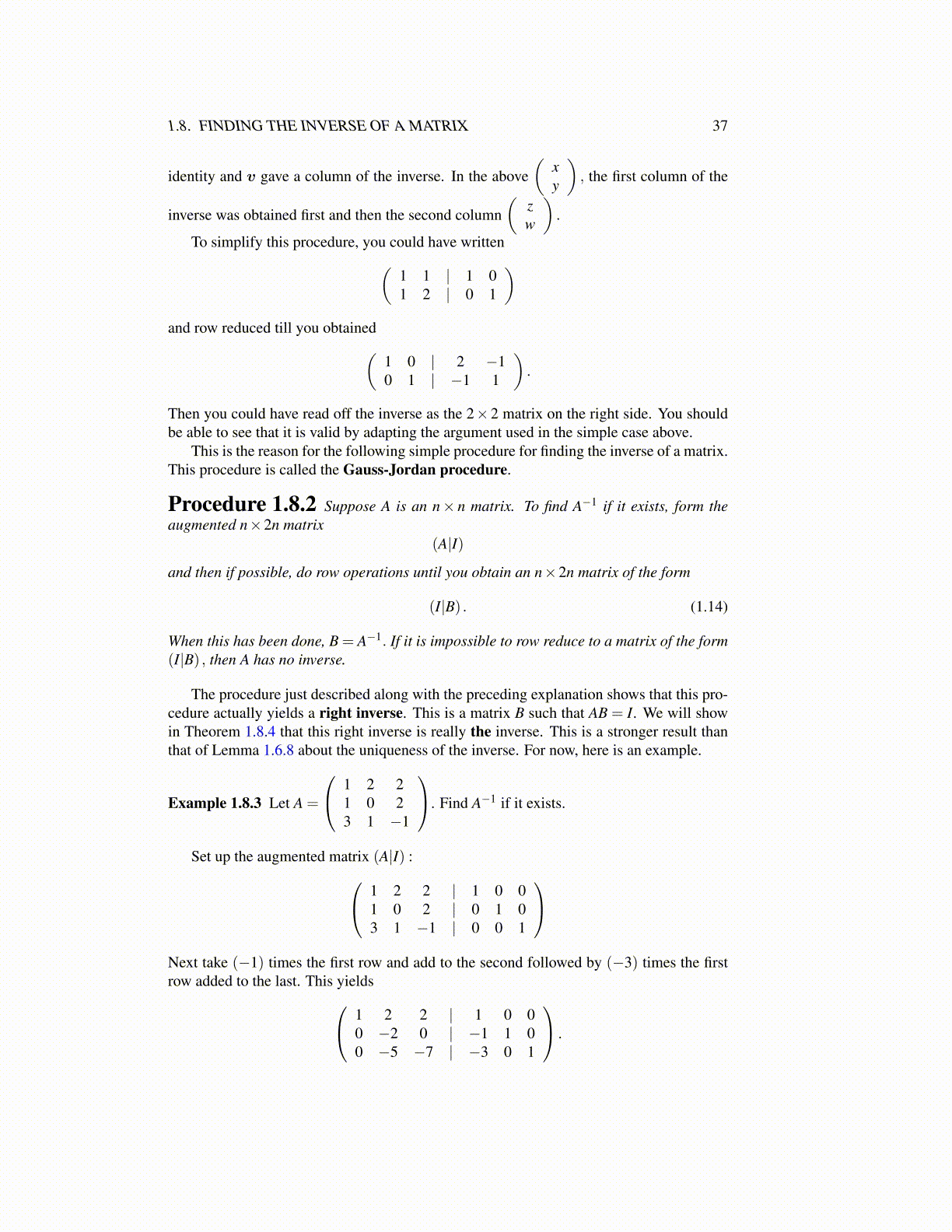
1.8. FINDING THE INVERSE OF A MATRIX 37
identity and v gave a column of the inverse. In the above(
xy
), the first column of the
inverse was obtained first and then the second column(
zw
).
To simplify this procedure, you could have written(1 1 | 1 01 2 | 0 1
)and row reduced till you obtained(
1 0 | 2 −10 1 | −1 1
).
Then you could have read off the inverse as the 2×2 matrix on the right side. You shouldbe able to see that it is valid by adapting the argument used in the simple case above.
This is the reason for the following simple procedure for finding the inverse of a matrix.This procedure is called the Gauss-Jordan procedure.
Procedure 1.8.2 Suppose A is an n× n matrix. To find A−1 if it exists, form theaugmented n×2n matrix
(A|I)
and then if possible, do row operations until you obtain an n×2n matrix of the form
(I|B) . (1.14)
When this has been done, B = A−1. If it is impossible to row reduce to a matrix of the form(I|B) , then A has no inverse.
The procedure just described along with the preceding explanation shows that this pro-cedure actually yields a right inverse. This is a matrix B such that AB = I. We will showin Theorem 1.8.4 that this right inverse is really the inverse. This is a stronger result thanthat of Lemma 1.6.8 about the uniqueness of the inverse. For now, here is an example.
Example 1.8.3 Let A =
1 2 21 0 23 1 −1
. Find A−1 if it exists.
Set up the augmented matrix (A|I) : 1 2 2 | 1 0 01 0 2 | 0 1 03 1 −1 | 0 0 1
Next take (−1) times the first row and add to the second followed by (−3) times the firstrow added to the last. This yields 1 2 2 | 1 0 0
0 −2 0 | −1 1 00 −5 −7 | −3 0 1
.